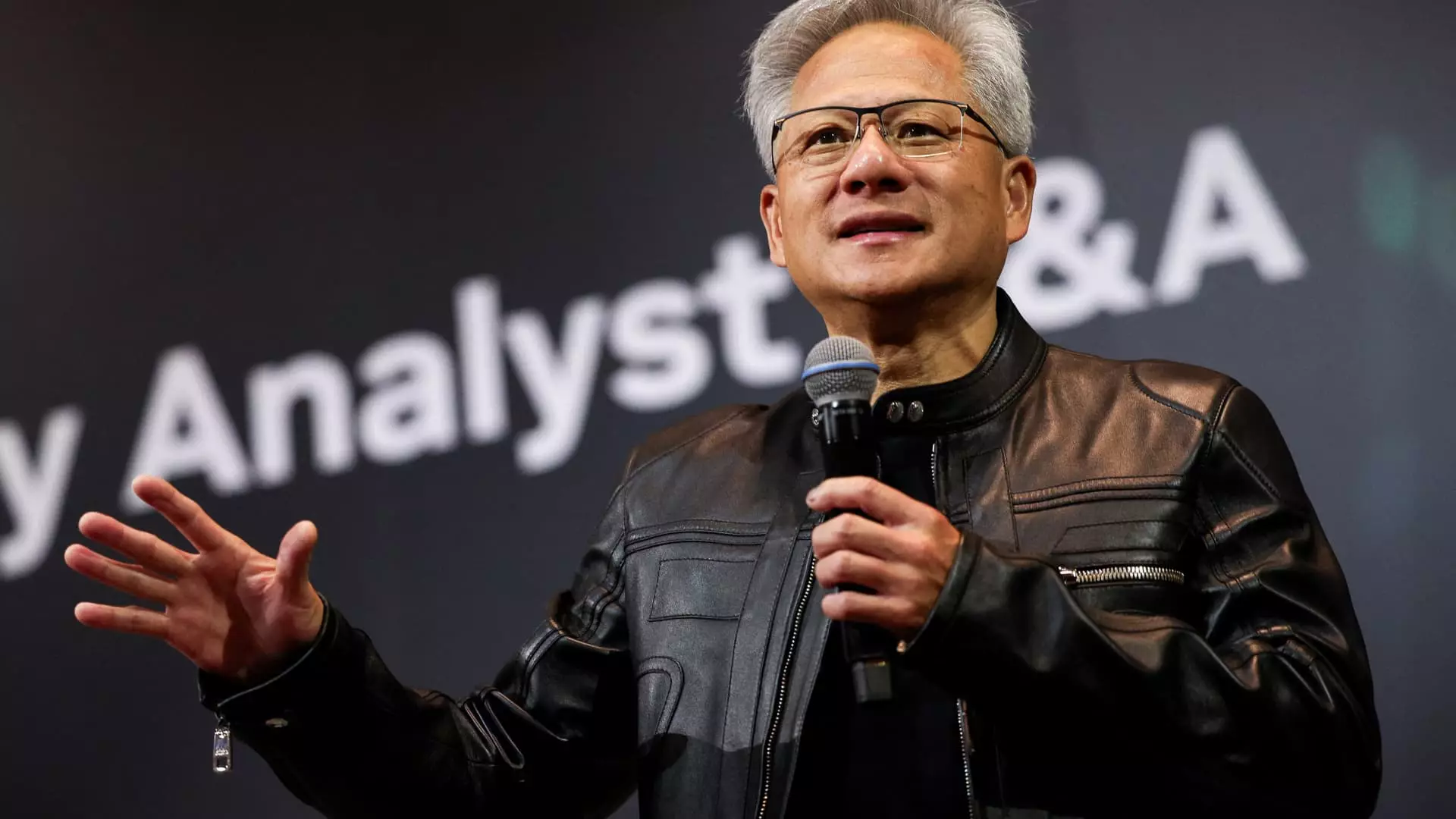In an era where technological prowess is often equated with national security and economic strength, the perception that the United States remains the undisputed leader of the chip industry is increasingly dubious. Recent events highlight a glaring disconnect: the U.S. government’s ambitious efforts to acquire stakes in vital semiconductor firms, such as TSMC, overshadow the reality that true innovation and manufacturing dominance have long moved East. While figures like Nvidia’s CEO Jensen Huang sing praises of Taiwan Semiconductor Manufacturing Co. (TSMC), such declarations mask the underlying vulnerabilities of Western-centric chip sovereignty.
What Huang’s remarks reveal, perhaps unintentionally, is a strategic acknowledgment of TSMC’s unparalleled role in global semiconductor supply chains. His glowing endorsement and the calls to buy TSMC stock are not mere platitudes—they underscore the company’s undeniable leadership. Yet, this admiration should prompt a more critical reflection on the U.S.’s misplaced reliance on foreign, especially Taiwanese, manufacturing prowess. It’s a revealing irony: a Taiwanese firm becomes a de facto kingpin while the U.S. flails for strategic control through financial maneuvers rather than fostering its own innovation ecosystem. The myth of American dominance is cracked open amidst geopolitical tensions and the staggering growth of Asian semiconductor giants.
Washington’s Quixotic Quest for Control: Staking a Claim or Sowing Discontent?
The chatter about the U.S. government eyeing a 10% stake in TSMC and similar investments in other industry giants is more than economic intrigue; it’s a symptom of desperation. The bipartisan-supported CHIPS Act, intended to rebuild U.S. semiconductor capabilities, functions as both a boon and a band-aid. While billions pour into building new factories in Arizona and other states, these efforts are often reactive rather than revolutionary. They attempt to reverse decades of underinvestment and neglect, but they lack the decisive innovation spirit that made countries like Taiwan, South Korea, and now China dominant.
Furthermore, the U.S. push to secure stakes in TSMC and other firms feels more like a symbolic gesture—an attempt to claim a piece of the tech pie—rather than a meaningful strategy to cultivate independence. The recent news that the U.S. might back away from directly seeking shares in those companies revealing internal contradictions: the government recognizes that many firms expanding in the U.S. do not pose a threat but rather align with the broader goal of stabilizing supply chains. This disconnect highlights a superficial approach: attempting to exert political control over a market that fundamentally thrives on innovation, agility, and geographical distribution.
TSMC’s Unassailable Growth: A Testament to the Future, Not the Past
The Taiwanese giant’s expansion, investment in American facilities, and willingness to supply cutting-edge chips to global tech companies showcase a resilient and forward-looking enterprise. TSMC’s dominance stems not from political maneuvers but from relentless innovation and strategic agility. Their investment plan of $165 billion in the U.S., alongside the production of next-generation AI and processing chips, underscores a future-oriented vision rooted in technological leadership. It’s a stark contrast to the U.S. narrative of recovering lost ground; TSMC already owns it.
Meanwhile, large U.S.-based firms are caught in a web of bureaucratic inertia and protectionist policies, which threaten to stifle innovation rather than foster it. Nvidia’s recent push to expand its Taiwanese operations reflects a fundamental truth: the heart of technological advancement currently beats in Taiwan, South Korea, and China, not in the Statutes of Congress or the spreadsheets of Washington bureaucrats. The stress on building a local supply chain, while necessary, merely sidesteps the real issue: the need for a comprehensive, long-term innovation strategy.
Navigating the Future: Real Leadership, Not Illusions
The truth is that technological leadership is a global chess game played far beyond the states’ borders. For the U.S. to regain true supremacy, it must critically assess its approach: rather than seeking to muscle in through stakes and subsidies, it should focus on fostering a domestic culture of innovation—unhindered by protectionism and geopolitical paranoia. Meanwhile, the narrative spun by U.S. officials about TI and Intel’s supposed resurgence is more wishful thinking than reality; these are companies battling obsolescence or playing catch-up.
Taiwan, for its part, exemplifies resilience and strategic vision. It recognizes that power resides not simply in manufacturing capacity but in the capacity to innovate, adapt, and lead. The industry’s future depends on continuous investment in research, talent, and international cooperation—elements that cannot be legislated or held hostage through political stakes alone.
As the world becomes increasingly multipolar in technological influence, the illusion of American dominance diminishes, revealing instead a new, complex landscape where leadership hinges on agility, innovation, and strategic partnerships. If the U.S. wishes to remain relevant, it must abandon the fantasy of quick fixes and coercive stakes. Instead, it should learn from Taiwan’s quiet but relentless pursuit of technological excellence, recognizing that true power isn’t bestowed through political gestures but earned through genuine investment and forward-thinking policies.


Leave a Reply